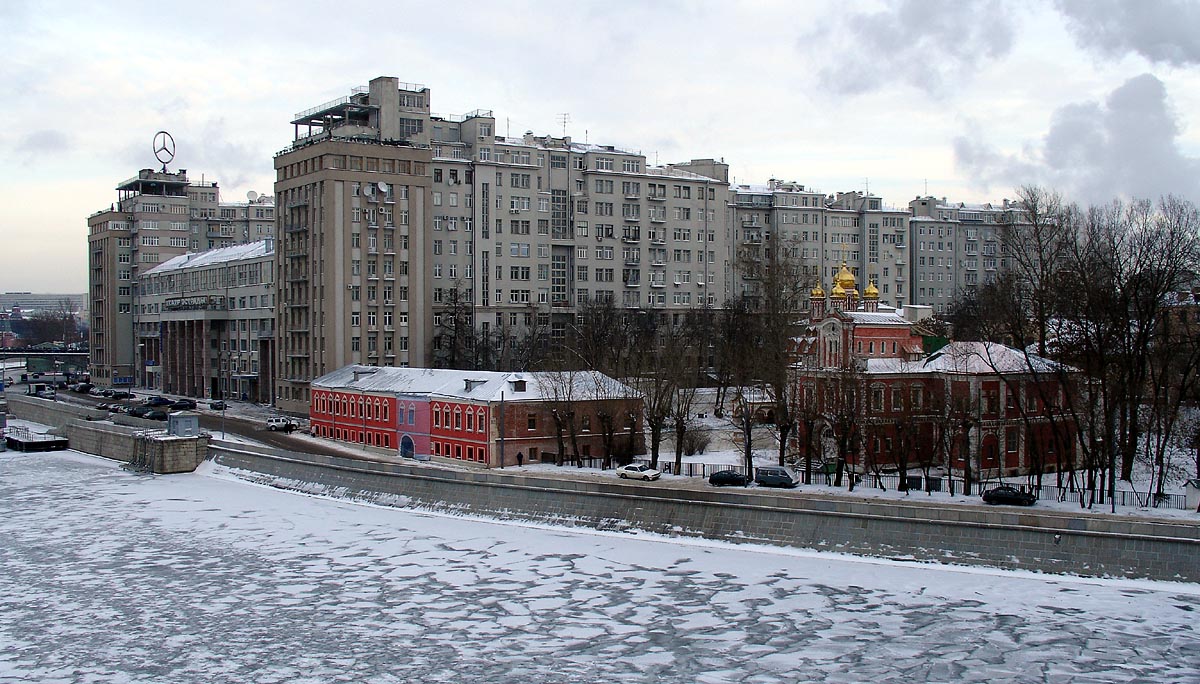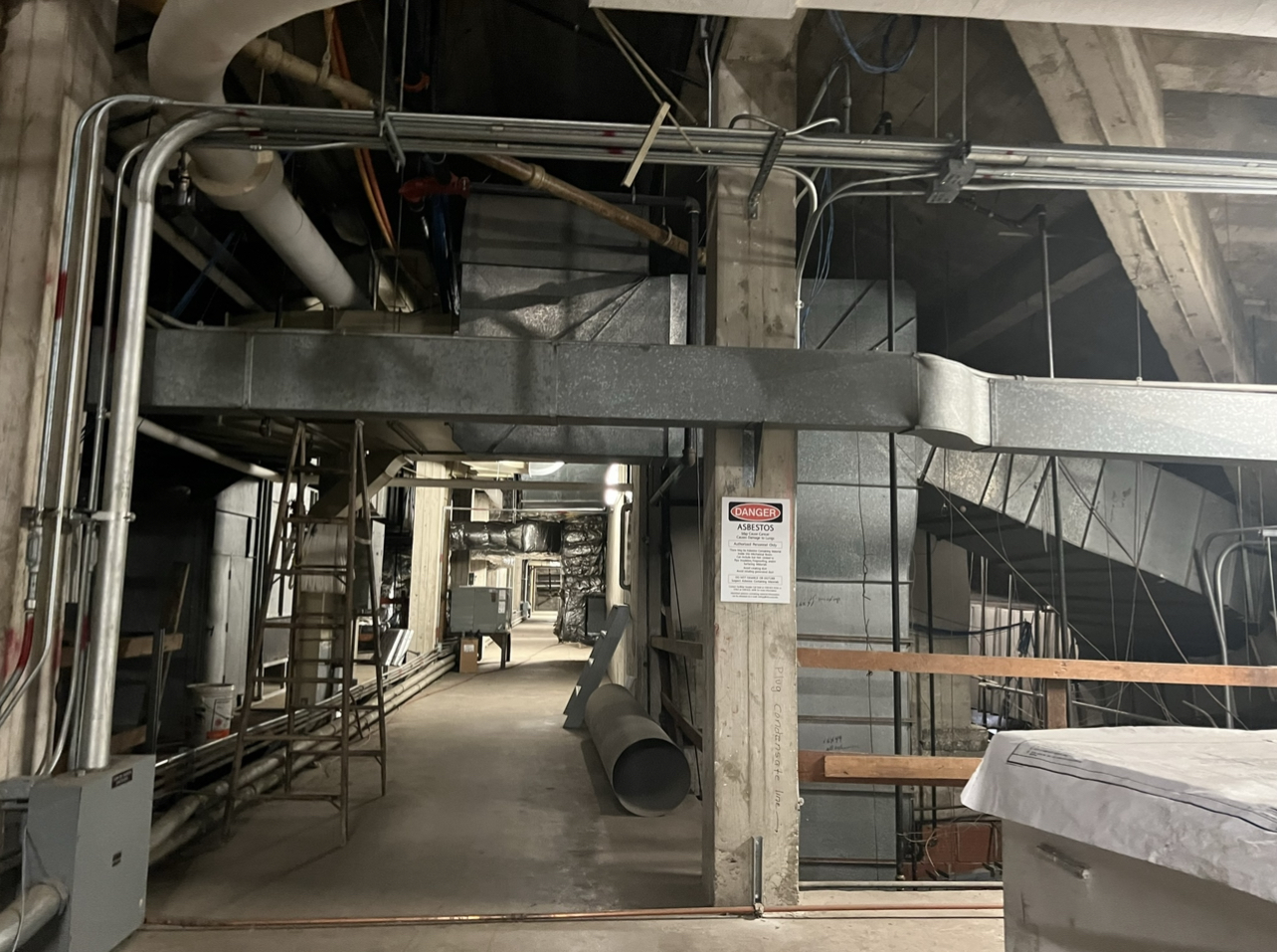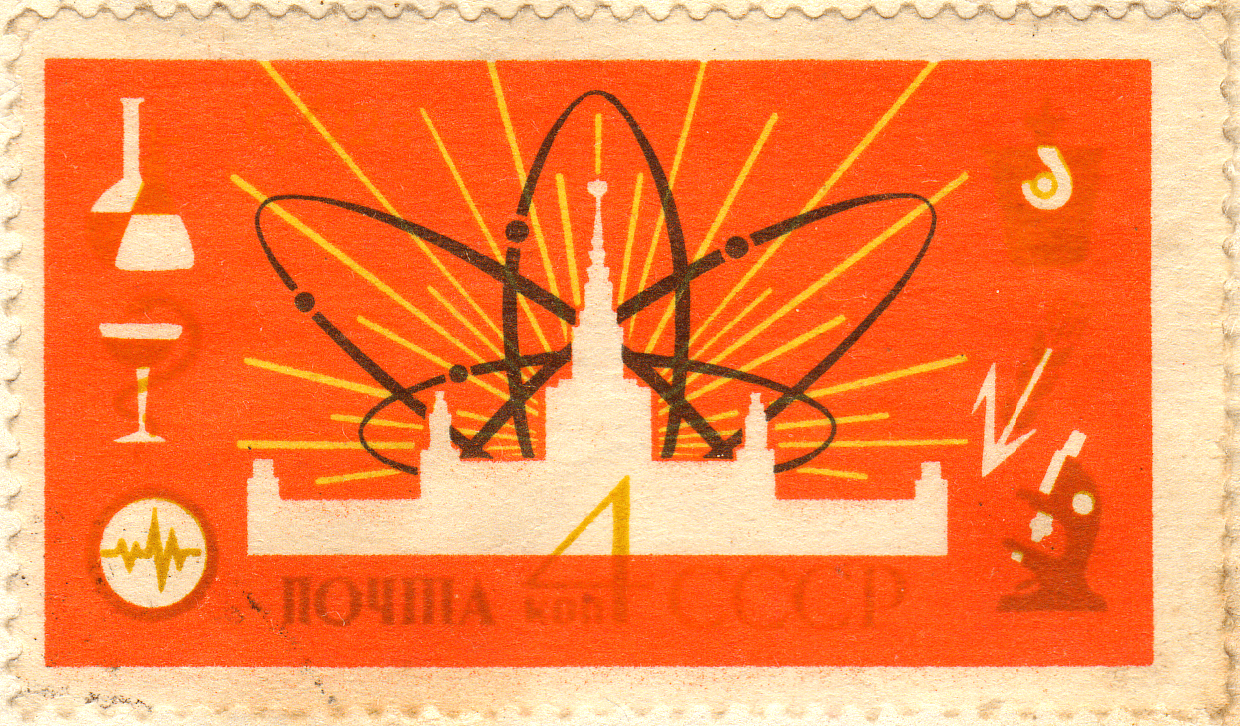|
Seven Sisters (Moscow)
The Seven Sisters () are a group of seven skyscrapers in Moscow designed in the Stalinist architecture, Stalinist style. They were built from 1947 to 1953. At the time of construction, they were the tallest buildings in Europe, and the main building of Moscow State University remained the List of tallest buildings in Europe, tallest building in Europe until 1990. The seven are: Radisson Royal Hotel, Moscow, Hotel Ukraina, Kotelnicheskaya Embankment Building, Kotelnicheskaya Embankment Apartments, the Kudrinskaya Square Building, the Hilton Moscow Leningradskaya Hotel, the Ministry of Foreign Affairs of Russia main building, main building of the Ministry of Foreign Affairs, the main building of Moscow State University, and the Red Gates Administrative Building. There were two more skyscrapers in the same style planned that were never built: the Eighth Sister, Zaryadye Administrative Building and the Palace of the Soviets. History The construction of the first Soviet skyscrape ... [...More Info...] [...Related Items...] OR: [Wikipedia] [Google] [Baidu] |
Boris Iofan
Boris Mikhailovich Iofan (, ; April 28, 1891 – March 11, 1976) was a Soviet architect of Jewish origin, known for his Stalinist architecture buildings like the 1931 House on the Embankment and the 1931–1933 winning draft of the Palace of the Soviets. Background Born in Odessa, Iofan graduated in 1916 from Italy's ''Regio Istituto Superiore di Belle Arti'' (now '' Accademia di Belle Arti'') in Rome with a degree in architecture, initially following the Neoclassical tradition. His first major work was a Barvikha sanatorium for the Party elite (1929), which introduced him to clients at the top of the state. In 1931, Iofan completed the elite block-wide ''House on the Embankment'' (official name Дом Правительства, ''Government Building''). The structure, containing 505 apartments, two theaters and retail stores, became an iconic example of early Stalinism. Boris Iofan was a lifelong resident of this building. Palace of Soviets Iofan's entry to the Pal ... [...More Info...] [...Related Items...] OR: [Wikipedia] [Google] [Baidu] |
Main Building Of Moscow State University
The main building of Moscow State University () is a , 36-story (central part) skyscraper in Moscow, Russia. It was designed by Lev Rudnev as the headquarters of Moscow State University, and is the tallest among the " Seven Sisters" constructed in Moscow between 1947 and 1953 in the Stalinist architectural style. It was the tallest building in Europe for 37 years, from 1953 to 1990, before being surpassed by the Messeturm in Germany. , it remains the tallest educational building in the world. Features The skyscraper has 36 levels in its central part and is tall. Its roof () is topped by a 58-metre spire which ends with a 12-ton five-pointed star. Lateral towers are lower than the central one; two 18 and 9 storey dormitory wings define, with the central corpus of the complex, a ''cour d'honneur'' courtyard. Among the statues which decorate the building is a sculpture by Vera Mukhina representing a couple of students and a statue by N. Tomsky of Mikhail Lomonosov (1711–176 ... [...More Info...] [...Related Items...] OR: [Wikipedia] [Google] [Baidu] |
Mechanical Floor
A mechanical floor, mechanical penthouse, mechanical layer or mechanical level is a story of a high-rise building that is dedicated to mechanical and electronics equipment. "Mechanical" is the most commonly used term, but words such as ''utility'', ''technical'', ''service'', and ''plant'' are also used. They are present in all tall buildings, including the world's tallest skyscrapers, with significant structural, mechanical and aesthetics concerns. While most buildings have mechanical rooms, typically in the basement, tall buildings require dedicated floors throughout the structure for this purpose, for a variety of reasons discussed below. Because they use up valuable floor area (just like elevator shafts), engineers try to minimize the number of mechanical floors while allowing for sufficient redundancy in the services they provide. As a rule of thumb, skyscrapers require a mechanical floor for every 10 tenant floors (10%), although this percentage can vary widely (see exa ... [...More Info...] [...Related Items...] OR: [Wikipedia] [Google] [Baidu] |
USSR State Prize
The USSR State Prize () was one of the Soviet Union’s highest civilian honours, awarded from its establishment in September 1966 until the dissolution of the USSR in 1991. It recognised outstanding contributions in the fields of science, mathematics, literature, the arts, and architecture. History State Stalin Prize (1941–1956) The award traces its origins to the State Stalin Prize (), commonly known as the Stalin Prize, which was established in 1941. It honoured achievements in science, technology, literature, and the arts deemed vital to the Soviet war effort and postwar reconstruction.Volkov, Solomon; Bouis, Antonina W., trans. 2004. ''Shostakovich and Stalin: The Extraordinary Relationship Between the Great Composer and the Brutal Dictator''. New York: Alfred A. Knopf. ISBN 0-375-41082-1. Ceremonies were suspended during 1944–45 and then held twice in 1946 (January for works from 1943–44; June for 1945 works). USSR State Prize (1966–1991) By 1966, the Stalin Prize h ... [...More Info...] [...Related Items...] OR: [Wikipedia] [Google] [Baidu] |
Dmitry Chechulin
Dmitry Nikolaevich Chechulin (; , in Shostka – 29 October 1981, in Moscow) was a Russian Soviet architect, Urban planning, city planner, author, and leading figure of Stalinist architecture. Life Born in Shostka (Sumy Oblast, today in Ukraine) to a working-class family, after service in the Red Army Chechulin enrolled in the state school Vkhutemas and graduated in 1929, doing post-graduate work under Alexey Shchusev. In the 1930s Chechulin was awarded commissions for four stations of the Moscow Metro, and developed his career to design a list of familiar Moscow landmarks. From 1945 through 1949 he served as chief architect of Moscow. Chechulin's work intersects with the Palace of the Soviets competition (the major event in Soviet architectural history) at multiple points. He was among the twelve finalists in the final round. He is credited for the Kotelnicheskaya Embankment Building, one of the Seven Sisters (Moscow), seven Moscow ''vysotki'' (tall buildings) commissioned ... [...More Info...] [...Related Items...] OR: [Wikipedia] [Google] [Baidu] |
Lev Rudnev
Lev Vladimirovich Rudnev (; – 19 November 1956) was a Soviet architect, and a leading practitioner of Stalinist architecture. Biography Rudnev was born to the family of a school teacher in Novgorod. He graduated from the Riga Realschule (now the Riga 1st State Grammar School) and entered the Imperial Academy of Arts in Saint Petersburg (1906). At the Academy he studied painting under Leon Benois and architecture under Ivan Fomin. From 1911 Rudnev was a success in various architectural competitions, and in 1915 he became a certified specialist in the art of architecture. After the February Revolution Rudnev won the competition for the Monument to the Fighters of the Revolution on the Field of Mars in Petrograd (March 1917). The avant-garde monument there was built according to his design. After the end of the Second World War, Lev Rudnev took active part in reconstructing the ruined cities of Voronezh, Stalingrad, Riga and Moscow. In 1922–1948 Rudnev was a Professor of ... [...More Info...] [...Related Items...] OR: [Wikipedia] [Google] [Baidu] |
Moscow State University
Moscow State University (MSU), officially M. V. Lomonosov Moscow State University,. is a public university, public research university in Moscow, Russia. The university includes 15 research institutes, 43 faculties, more than 300 departments, and six branches. Alumni of the university include past leaders of the Soviet Union and other governments. As of 2019, 13 List of Nobel laureates, Nobel laureates, six Fields Medal winners, and one Turing Award winner were affiliated with the university. History Imperial Moscow University Ivan Shuvalov and Mikhail Lomonosov promoted the idea of a university in Moscow, and Elizabeth of Russia, Russian Empress Elizabeth decreed its establishment on . The first lectures were given on . Saint Petersburg State University and MSU each claim to be Russia's oldest university. Though Moscow State University was founded in 1755, St. Petersburg which has had a continuous existence as a "university" since 1819 sees itself as the successor of an a ... [...More Info...] [...Related Items...] OR: [Wikipedia] [Google] [Baidu] |
Mikhail Posokhin
Mikhail Vasilyevich Posokhin (; 30 November 1910 - 22 January 1989) was a Soviet, Russian architect and teacher. People's Architect of the USSR (1970). Laureate of the Lenin Prize (1962), State Prize of the USSR (1980) and Stalin Prize of the second degree (1949). He is mostly known for being Chief Architect of Moscow (1960–1980). Among his main completed projects are a high-rise residential building on Kudrinskaya Square and the development of New Arbat Avenue in Moscow. He served as a member of the Union of Architects of the USSR. Full member of the USSR Academy of Arts (1979), member of the Presidium, academician-secretary of the Department of Architecture and Monumental Art of the USSR Academy of Arts (1979). Corresponding member of the USSR Academy of Architecture (1950–1955), Academy of Construction and Architecture (1956–1963). Biography Early life Born on November 30 (December 13), 1910 in Tomsk. His parents, Vasily Mikhailovich and Maria Alexandrovna, belonged to t ... [...More Info...] [...Related Items...] OR: [Wikipedia] [Google] [Baidu] |





